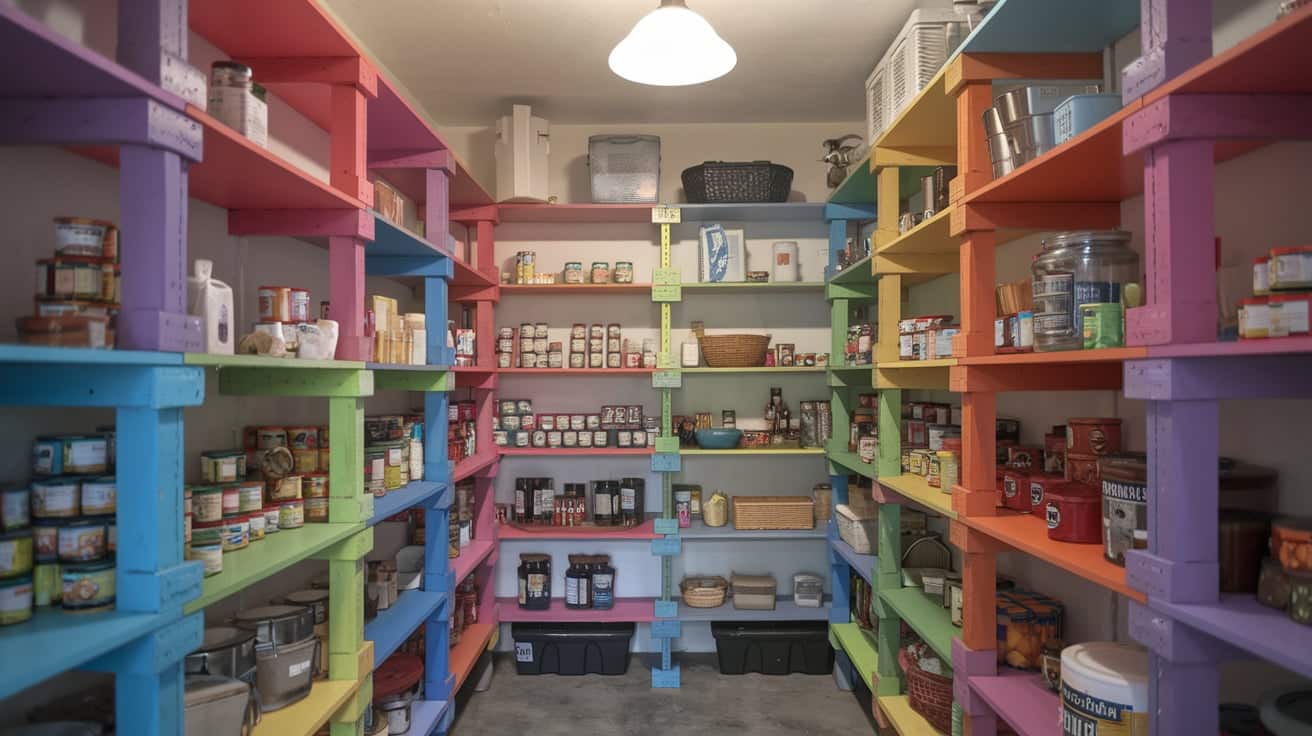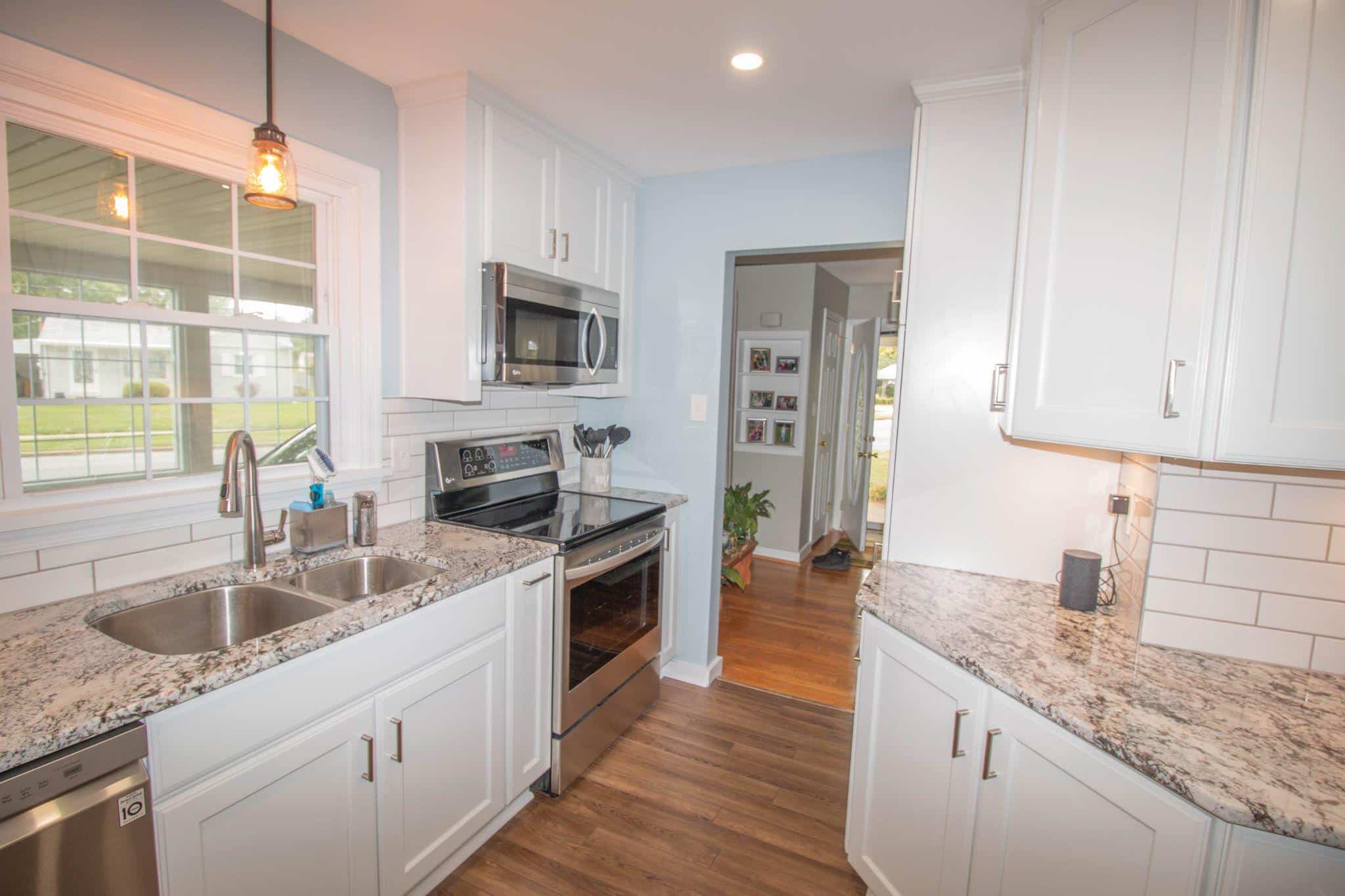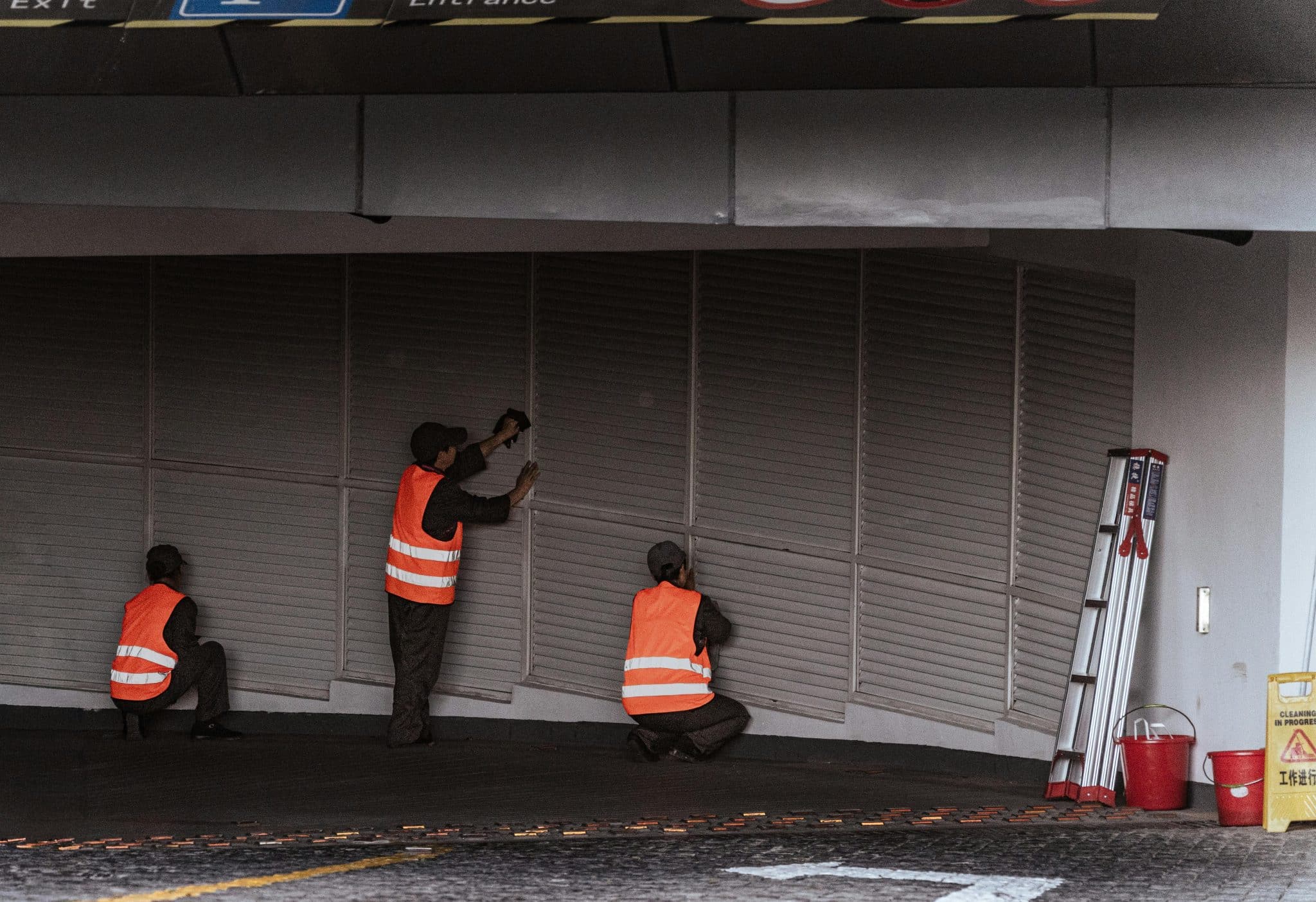I was tired of store-bought pantry shelves that waste space and never quite fit.
Standard shelving solutions can be frustrating and expensive, especially when maximizing storage in a small pantry.
The good news? You can build custom pantry shelves that perfectly match your space and needs.
I’ll walk you through a detailed, beginner-friendly guide to creating sturdy, professional-looking pantry shelves that’ll transform your storage situation.
You’ll learn everything from selecting the right materials to proper installation techniques that ensure your shelves stay level and secure.
In this step-by-step guide, I’ll share proven methods, helpful tips, and common pitfalls to avoid while building your perfect pantry shelving system.
Tools and Materials Required
Tools Required
| Tool | Purpose | Quantity |
|---|---|---|
| Graph paper | For planning the layout and dimensions of the pantry shelves | 1 |
| Measuring tape | To measure the shelf dimensions and ensure proper fitting | 1 |
| Stud finder | To locate wall studs for secure shelf mounting | 1 |
| Spirit level | Ensures shelves are installed level for stability | 1 |
| Miter saw | For making precise cuts on boards and trim | 1 |
| Pocket hole jig | For drilling pocket holes to join pieces securely | 1 |
| Nail gun | For quick and secure fastening of wood components | 1 |
| Orbital sander | For smoothing and finishing wood surfaces | 1 |
| Paint roller and brush | To apply paint and primer smoothly and evenly | 1 set |
Materials Required
| Material | Purpose | Quantity |
|---|---|---|
| Plywood sheets (11¼ inches wide) | Used for the shelves themselves | As needed based on pantry size |
| 1×2 boards (8 feet long) | For framing the shelves and supporting structure | Quantity based on shelf design |
| Wood screws (1¼ inch) | To secure wood pieces together | 1 box |
| Pocket hole screws | To reinforce joints and secure pieces | 1 box |
| Drywall anchors | To provide strong support for shelf installation in drywall | Quantity based on shelf mounting locations |
| Wood putty | To fill any holes or imperfections in the wood | 1 container |
| Wood glue | For bonding wood pieces together securely | 1 bottle |
| Pocket hole plugs | To cover the pocket holes after assembly | 1 pack |
| Painter’s caulk | To fill gaps and seams between the shelves and walls | 1 tube |
| Primer (Zinser water-based) | To prepare wood surfaces for painting | 1 can |
| Paint (Sherwin-Williams cabinet and trim paint in bright white) | Finish the shelves with a clean, durable coat | 1 can |
Step-by-Step Guide: DIY Pantry Shelves
Step 1: Planning and Measurement
Create a detailed sketch on graph paper. Calculate the dimensions for shelves, cleats, and facing pieces. This will help determine material quantities and confirm the proper fit.
Step 2: Clear the Space
Remove existing shelves to create an empty area. This will allow you to verify that your measurements are accurate.
Step 3: Mark and Mount Back Cleats
Apply painter’s tape to indicate shelf heights. Start with the bottom cleat, using a stud finder for secure mounting points. Check alignment before securing with screws.
Step 4: Secure Side Cleats
Connect side cleats using pocket holes to join with back cleats. Add drywall anchors in areas without studs. Verify alignment before final attachment.
Step 5: Shape and Test Shelves
Cut plywood to size. Use test placement to verify that all pieces fit correctly. Label each shelf to indicate its proper position.
Step 6: Place Shelves
Create pilot holes in shelves, then secure them to cleats using wood screws. Join side shelves to back shelves using pocket hole screws for strength.
Step 7: Add Support Bar
Position a center support bar, checking that it is centered and straight. For extra stability, attach it to each shelf using a nail gun.
Step 8: Build Shelf Edges
Cut and place 1×2 boards as shelf edges, using mitered corners at meeting points. Secure with a nail gun for neat attachment.
Step 9: Complete Surface Work
Add wood putty to screw holes, insert pocket hole plugs, and sand all surfaces smooth. Clear debris before painting.
Step 10: Apply Finishes
Start with primer, add paint, and apply caulk where shelves meet walls. Complete with touch-ups on shelves and walls.
Video Tutorial
Check out this YouTube video for a detailed step-by-step tutorial on making DIY Pantry Shelves.
Tips and Tricks
| Tip | Description |
|---|---|
| Initial Test Cut | Make one sample cut to verify measurements. This preserves materials and helps avoid repeated mistakes. |
| Spacing Blocks | Create blocks to maintain equal shelf gaps. This speeds up placement and creates uniform spacing. |
| Stud Location Method | Copy stud marks between cleats before placement. This creates an efficient guide for mounting. |
| Pilot Hole Technique | Use a countersink bit for holes to keep screws flush with wood. This makes a better base for wood putty. |
| Shelf Identification | Label shelves during test placement to track positions. This maintains order during final placement. |
| Surface Preparation | Begin with fine-grit sandpaper, switching to coarse only when needed. Complete all areas with fine grit for a smooth finish. |
| Caulk Application | Place a line of caulk along the edges and smooth by hand for professional results. This creates crisp lines and a built-in look. |
Maintenance of DIY Pantry Shelves
Proper maintenance of your DIY pantry shelves ensures they remain sturdy and functional. Here are some tips for long-lasting upkeep:
1. Regular Cleaning
- Dusting: Dust the shelves regularly to prevent the build-up of dirt and grime. Use a microfiber cloth to avoid scratching the surface.
- Spills: Clean up food or liquid spills immediately to prevent stains and preserve the integrity of the wood.
- Deep Cleaning: Occasionally, deep clean the shelves with a gentle wood cleaner. Apply the cleaner with a soft cloth, and avoid soaking the wood to prevent water damage.
2. Preventing Warping
- Moisture Control: Keep the pantry area dry and well-ventilated. Excessive moisture can cause wood to warp. Use a dehumidifier if necessary in high-humidity areas.
- Avoid Heavy Loads: Avoid overloading the shelves with heavy items, as this could cause the wood to bend or warp over time.
3. Repainting or Refinishing
- Touch-ups: The paint or finish on the shelves might wear off over time, especially in areas with frequent use. To keep them fresh, touch them with matching paint or finish.
- Sanding: If the wood looks worn or scratched, lightly sand the surface and apply a new coat of finish to restore its appearance.
4. Check Shelf Stability
- Tightening Screws: Regularly check the screws and fasteners for any loosening. Tighten any screws or bolts as needed to keep the shelves stable and secure.
- Reinforcing Shelves: If you notice any sagging or instability, consider reinforcing the shelves with additional brackets or support under the middle sections.
Common Mistakes When Building DIY Pantry Shelves
Even experienced DIYers can make mistakes. Here are some common ones to avoid when building your pantry shelves:
1. Incorrect Measurements
One of the most common mistakes is not taking accurate measurements. To create shelves that fit perfectly, ensure that you measure the width and depth of your pantry.
2. Using the Wrong Wood
Some softwoods, like pine, may not be durable enough for pantry shelves, especially if you’re storing heavy items. Opt for hardwood like oak or plywood, which can support more weight.
3. Not Reinforcing the Shelves Properly
If you don’t add support under heavy-duty shelves, they may sag over time. To reinforce your shelves, use the proper brackets or supports.
4. Overloading Shelves
Another common mistake is overloading pantry shelves with too much weight. Always check the weight capacity of the wood and brackets used. Heavy items should be distributed evenly.
5. Neglecting Shelf Finish
Failing to finish or treat the wood properly can cause damage over time. Not applying a protective finish can lead to moisture absorption, scratches, and stains.
6. Not Securing Shelves to Wall Studs
Shelves need to be anchored securely into wall studs. They will likely fall over time if you mount them only into drywall. Always use wall anchors or screws that go into the studs.
Conclusion
Building your pantry shelves goes beyond creating storage space – crafting a solution that fits your needs.
From the satisfaction of measuring and cutting each piece to seeing your completed project neatly organized, custom shelving transforms your pantry and daily routine.
Remember, taking time with each step, from careful planning to the final coat of paint, ensures shelves that will serve you well for years.
The techniques and skills you’ve learned here can also be applied to other home projects.
Whether you choose basic shelving or added pull-out features, your new pantry setup will add functionality and a personal touch to your home.
With proper maintenance, these shelves will keep your pantry organized and accessible for years to come.








